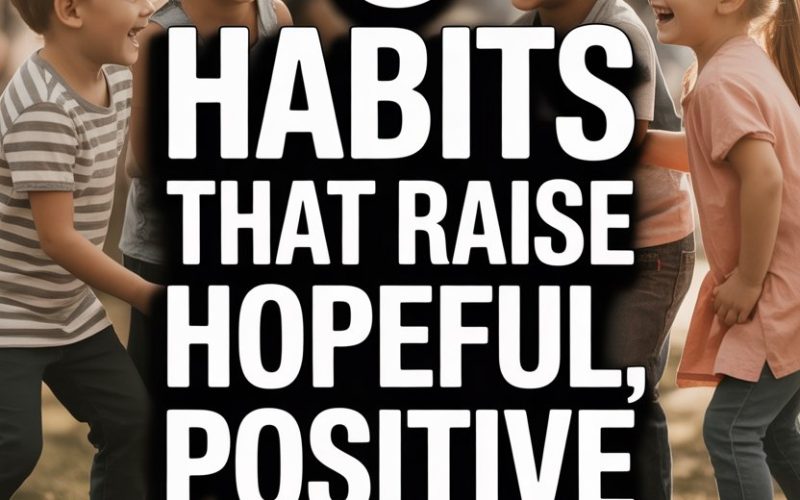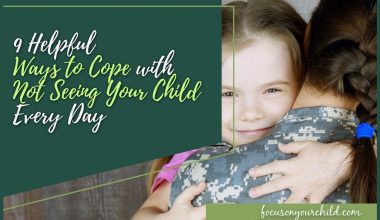Ever spent a rainy Sunday wondering if you’re giving your child the right toolkit for a life that’s more “glass half full” than “who left the cup out again?” You’re not alone.
Raising hopeful, positive kids feels a bit like learning origami: everyone else’s swans look perfect, yours slightly resemble a chewed napkin.
But hope and optimism are skills—yes, that’s right, skills—parents can nurture, even if your own childhood involved more sarcasm than sunshine.
Ready for a few habits that actually work? Let’s get to it.
1. Model Positive Self-Talk (Even When the Toast Burns)
Kids watch everything, from the way you brush your teeth to the language you use when you step on a rogue piece of Lego. If your inner dialogue sounds like “I’m hopeless at this,” chances are your little one’s mental playlist will echo the same tune.
A study from the University of Pennsylvania highlighted that children pick up on their parents’ explanatory styles—how you interpret setbacks and successes.
When you narrate your own mistakes with a healthy dose of self-compassion (“Well, that meeting flopped, but I’ll try a new approach next time”), you’re teaching resilience and hope.
Try narrating your own challenges out loud:
“We’re stuck in traffic, but that means we can finish our car karaoke session!”
Or, for the brave: “That dinner tasted… unique. I think I’ll tweak the recipe.”
Your child learns optimism is less about pretending everything is perfect, and more about believing things can get better.
And if you do mutter something less than positive? That’s fine. We all do.
The trick is to catch yourself, reframe it, and let your child see you try again. You’re not aiming for flawless, just honest and hopeful.
2. Celebrate Effort, Not Just Results
Picture your child beaming, hands sticky with glue and glitter, holding up a misshapen cardboard spaceship. Complimenting the craft (“That’s so creative!”) feels natural.
Praising only the outcome, though, can accidentally teach children their worth depends on being the best.
Carol Dweck’s research on mindset shows that kids praised for effort (“I can see you worked really hard on that!”) are far more likely to stick with difficult tasks than kids praised only for innate ability or perfect results.
This isn’t about relentless positivity (“Wow, you got a D in maths! Yay!”), but about genuinely noticing the process.
Point out the strategies they used, their persistence, or their creativity. “You kept going even when your spaceship fell apart. That’s real determination.”
Sure, there’ll be days when effort is… let’s call it “minimal.” In those moments, acknowledge the struggle, and offer encouragement to try again.
The goal is to help your child find hope in their own ability to improve, not in being mistake-free from the get-go.
3. Share Stories of Hope—From Your Life and Others’
“Once upon a time” isn’t just for bedtime. Stories help children make sense of the world and their place in it.
Positive psychology researchers often point out that hopeful role models—real people or beloved storybook characters—help kids picture what’s possible, even in the tough bits.
Share stories from your own life. Maybe you flunked your driving test twice, but kept going. Maybe you moved to a new city and found friends in unlikely places.
Let your child hear not just the happy ending, but the mess in the middle.
Diversifying the stories helps too. Books like “The Most Magnificent Thing” or “Last Stop on Market Street” show kids that hope and optimism aren’t about ignoring problems; they’re about facing them with creativity and grit.
If your child prefers superheroes or dinosaurs, there’s hope in those tales too. Superman didn’t nail flying on the first try. Even T-Rex had to put up with those tiny arms (talk about perseverance).
When you weave hope into everyday conversation—at the dinner table, on walks, even during bathtime—you’re building a family culture where hope is ordinary, not extraordinary.
4. Encourage Problem-Solving, Not Fixing
The urge to swoop in and solve every problem for your child can be mighty strong. (Cue the classic “forgotten lunch, delivered by frantic parent at 11 am.”)
Yet, giving kids a chance to puzzle things out is one of the best ways to build hope and confidence.
Psychologist Charles Snyder described hope as the ability to set goals, work out ways to reach them, and stay motivated—especially when things get tricky.
Each time your child faces a setback (lost shoe, tricky friendship, maths worksheet from the underworld), resist the urge to jump in with the solution.
Instead, ask gentle questions:
“What do you think we could try?”
“Who could help you with this?”
“What’s one small step you could take?”
You’re not abandoning them to the wolves—you’re coaching from the sidelines. And when they do come up with a solution (even if it involves mismatched socks or asking the teacher for help), celebrate that effort.
This habit gives your child the message: You have the tools to face problems, and you can keep trying, even when it’s hard.
Sure, sometimes the solution is “cry on the kitchen floor for a bit.” That’s fine too.
Hope isn’t about relentless cheerfulness; it’s about believing things can improve and that you can play a part in making it happen.
5. Make Gratitude a (Genuine) Family Habit
The “gratitude jar” isn’t just for Pinterest-perfect families. Practicing thankfulness together, even if your child grumbles at first, builds optimism and resilience.
Studies have shown that regular gratitude practices boost well-being in children and adults alike (the Greater Good Science Center has great resources if you want to dig further).
Keep it low-key:
Share one good thing at dinner.
Start bedtime with “What made you smile today?”
Write down a family “thankful list” on the fridge (bonus points for silly answers: “I’m grateful we don’t have to eat Brussels sprouts this week”).
The trick is to keep it genuine. If your child says, “Nothing was good about today,” empathize (“Sounds like a rough one”) and gently ask, “Anything tiny—like a tasty snack or a funny song?”
Over time, even small moments start to stand out.
And don’t forget about your own gratitude habit. Share your own moments of thankfulness, no matter how ridiculous (“I’m grateful I found my keys where I actually left them”). It’s contagious—in the best way.
Hope Grows in the Everyday
There’s no magical recipe for raising hopeful, positive kids—just real life, messy and imperfect, with plenty of burnt toast and mismatched socks.
The good news: hope isn’t the preserve of the eternally chipper. It’s a skill that blooms in the hands of parents willing to try, fumble, and try again.
So, next time you wonder if your efforts matter, know this: every story you share, every moment you celebrate, every time you help your child pick themselves up after a wobble—these are the seeds of hope.
And sometimes, those odd-looking origami swans are the most beautiful of all.





